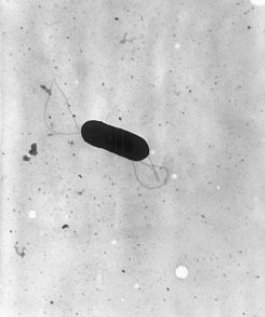Medical Pharmacology Chapter 35 Antibacterial Drugs
The Aminopenicillins: Ampicillin and Amoxicillin
Pharmacokinetics and Pharmacological Properties1
Absorption
Ampicillin and amoxicillin are virtually identical in both their mechanism in antibacterial spectrum.2,4,5
However, the important differences are pharmacokinetic.
Increased use of amoxicillin in oral therapy is the result of its superior pharmacokinetic characteristics.
![]() Absorption
and bioavailability represent the single most important
differentiating factor.2,3
Absorption
and bioavailability represent the single most important
differentiating factor.2,3
Amoxicillin
This agent exhibits excellent and reliable absorption from the gastrointestinal tract.
Its oral bioavailability is approximately 75–90%.
Its absorption is not significantly affected by the presence of food3, which allows for more convenient dosing and enhances patient adherence.
Ampicillin
Oral absorption is incomplete and highly variable, with
a bioavailability of only 30–55%.
The presence of food markedly decreases both the rate and extent of absorption, necessitating administration on an empty stomach (1 hour before or 2 hours after meals) to maximize efficacy.
These dosing requirements represent a significant barrier to compliance.
![]() This
difference in absorption translates directly into more
favorable pharmacodynamics for amoxicillin.
This
difference in absorption translates directly into more
favorable pharmacodynamics for amoxicillin.
An equivalent oral dose of amoxicillin produces a peak serum concentration (Cmax) and an area under the concentration-time curve (AUC) that are approximately double those achieved with ampicillin.7
For a time-dependent class of antibiotics like β-lactams, where efficacy is driven by the duration, drug concentration remaining above the minimum inhibitory concentration (T>MIC) is important.
Comparatively superior exposure makes amoxicillin a far more reliable agent for treating systemic infections via the oral route.2
Distribution
Both ampicillin and amoxicillin are widely distributed into body tissues and fluids.
They achieve therapeutic concentrations in many sites such as the lungs, middle ear fluid, bile, and urine.
Protein binding is relatively low (~20% for both, which is low compared to anti-staphylococcal penicillins)6, meaning a large free fraction of drug is available to act on bacteria.
Neither drug penetrates the blood-brain barrier well under normal circumstances; however, in the presence of inflamed meninges (e.g. during meningitis), these agents can attain sufficient levels in cerebrospinal fluid.6
This property is crucial for treating meningitis caused by susceptible organisms (as discussed below).
Both drugs cross the placenta and are excreted in breast milk in small amounts, but they are considered safe in pregnancy and lactation (category B).8
Ampicillin is one of the most used antibiotics in pregnancy and is the drug of choice for Listeria monocytogenes infections in pregnancy, reflecting its safety profile.8
 |
|
Pregnancy increases ampicillin clearance by up to 50%, requiring elevated doses in order to reach therapeutic levels.8,9
Metabolism and Excretion
Aminopenicillins are not extensively metabolized.6,8
The majority of an administered dose is excreted unchanged by the kidneys via glomerular filtration and tubular secretion.6,8
Because of this short half-life, dosing is typically frequent (e.g., every 6 hours for ampicillin, every 8–12 hours for amoxicillin) to maintain therapeutic levels.
Probenecid, which blocks renal tubular secretion, can prolong the half-life of aminopenicillins by slowing their excretion.10
In patients with renal impairment, the elimination is delayed and doses must be adjusted to prevent accumulation.6
Pharmacodynamics
These drugs are time-dependent bactericidal agents.
Efficacy correlates with the duration that concentrations exceed the MIC of the pathogen, rather than achieving a high peak concentration.
Optimized regimens use around-the-clock dosing or continuous infusions for serious infections to minimize troughs in drug level.10
In terms of spectrum, amoxicillin and ampicillin are often described as “extended-spectrum” penicillins relative to penicillin G, given that ampicillin and amoxicillin exhibit enhanced activity against E.coli and other gram-negative enteric bacilli compared with peinicillin G.11
These aminopenicillins cover most of the penicillin G-sensitive Gram-positives (e.g. streptococci, Enterococcus faecalis, Listeria) and add coverage of some common Gram-negative pathogens (due to the amino side chain).11
September, 2025
|
|
This Web-based pharmacology and disease-based integrated teaching site is based on reference materials, that are believed reliable and consistent with standards accepted at the time of development. Possibility of human error and on-going research and development in medical sciences do not allow assurance that the information contained herein is in every respect accurate or complete. Users should confirm the information contained herein with other sources. This site should only be considered as a teaching aid for undergraduate and graduate biomedical education and is intended only as a teaching site. Information contained here should not be used for patient management and should not be used as a substitute for consultation with practicing medical professionals. Users of this website should check the product information sheet included in the package of any drug they plan to administer to be certain that the information contained in this site is accurate and that changes have not been made in the recommended dose or in the contraindications for administration. Advertisements that appear on this site are not reviewed for content accuracy and it is the responsibility of users of this website to make individual assessments concerning this information. Medical or other information thus obtained should not be used as a substitute for consultation with practicing medical or scientific or other professionals. |